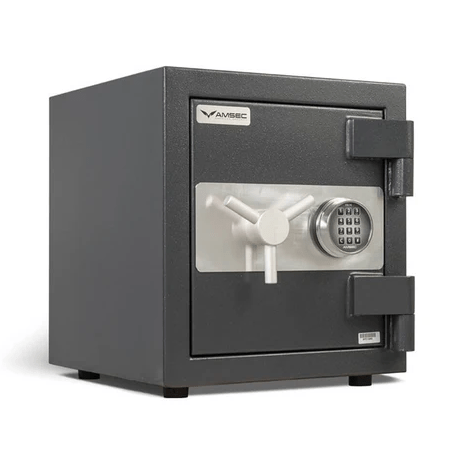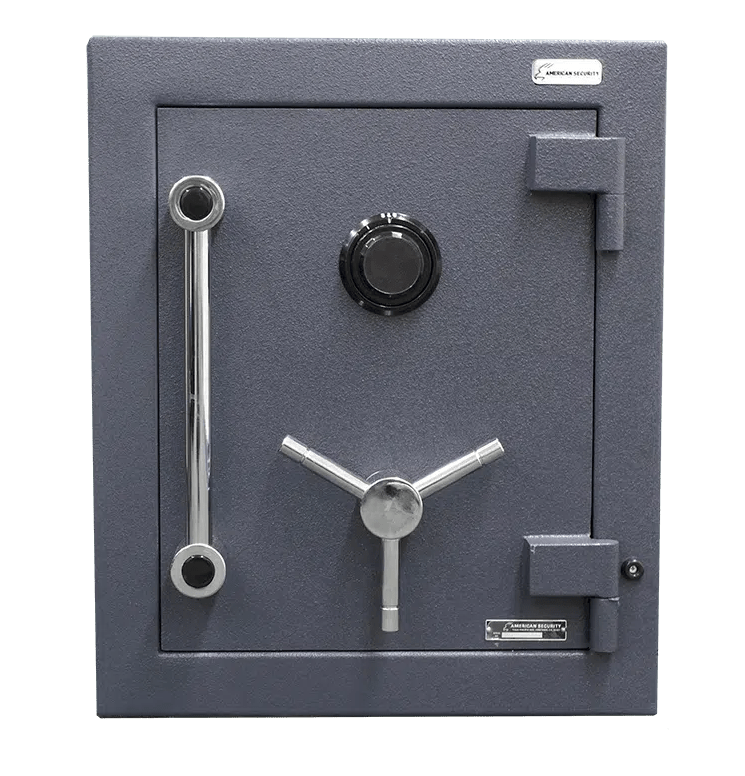A reliable safe is essential when protecting valuables, whether documents, jewelry, or firearms. However, not all safes are created equal. This is where safe ratings come into play, providing a standardized way to gauge safes’ effectiveness and security level. This article will delve into home safe in Dubai and their ratings, how they work, the countries that follow these standards, the different types of ratings for various safes, and their benefits. Additionally, we will explore recent trends in the industry and its growth.
What Are Safe Ratings?
Safe ratings are standardized measurements that indicate a safe’s security level. These ratings are assigned by various independent testing organizations based on a safe’s ability to withstand different types of attacks, such as drilling, cutting, or prying, as well as its resistance to fire and other environmental hazards. The primary purpose of these ratings is to help consumers make informed decisions when purchasing a safe, ensuring that they choose one that meets their specific security needs.
Countries That Follow Safe Ratings
Several countries have established organizations that provide safe ratings, ensuring that safes sold within their jurisdictions meet stringent security standards. Some of the prominent countries and their respective organizations include:
- United States: Underwriters Laboratories (UL)
- United Kingdom: British Standards Institution (BSI)
- Germany: VdS Schadenverhütung GmbH (VdS)
- Japan: Japanese Industrial Standards (JIS)
- Australia: Standards Australia (SA)
- United Arab Emirates: UAE Civil Defense
These organizations conduct rigorous tests to assess safes’ security features, including construction, locking mechanisms, and fire resistance.

Different Types of Safe Ratings
Safe ratings can be categorized based on the type of protection they offer, such as burglary resistance, fire resistance, or a combination of both. Here are some of the most common types of safe ratings:
Burglary Ratings
Burglary ratings indicate how well a safe can withstand attempts to break into it. These ratings are typically determined through testing that simulates various forms of attack, including drilling, cutting, and prying. Some common burglary ratings include:
- UL RSC (Residential Security Container): Indicates that the safe can withstand a moderate attack for at least five minutes.
- UL TL-15: Using common tools, the safe can resist entry for at least 15 minutes.
- UL TL-30: The safe can withstand a 30-minute attack using a wider range of tools.
- UL TRTL-30: The safe can resist tool and torch attacks for at least 30 minutes.
Fire Ratings
Fire ratings assess a safe’s ability to protect its contents from fire. These ratings are based on how long the safe can withstand high temperatures while keeping the internal temperature below a certain threshold. Common fire ratings include:
- UL Class 350: The internal temperature remains below 350°F (177°C) for the specified duration (e.g., 1 hour, 2 hours).
- UL Class 150: Designed to protect magnetic tapes and photo films, keeping the internal temperature below 150°F (65°C).
- UL Class 125: Suitable for protecting electronic media, maintaining an internal temperature below 125°F (52°C).
Combined Ratings
Some safes are rated for burglary and fire resistance, providing comprehensive protection. These combined ratings ensure the safety can withstand physical attacks and high temperatures.
Industries That Use Safe Ratings
While safes are commonly used in homes, several industries heavily rely on rated safes to protect valuable assets. Some of these industries include:
- Banking and Finance: Banks and financial institutions use high-security safes to protect cash, documents, and other valuable assets.
- Retail: Retailers use safes to secure cash, valuable merchandise, and important documents.
- Jewelry Stores: Jewelry stores require high-security safes to protect their inventory from theft.
- Healthcare: Hospitals and clinics use safes to secure medications, sensitive documents, and medical records.
- Government: Government agencies use safes to protect classified information and valuable assets.
Safe Grading and Rating: How It All Works
Safe grading and rating involve a series of tests conducted by independent organizations. These tests are designed to evaluate the safe’s construction, locking mechanisms, and resistance to various forms of attack. Here’s how the process typically works:
Testing for Burglary Resistance
- Physical Attack Testing: The safe is subjected to physical attacks using drills, saws, and crowbars. The testing period varies depending on the rating level (e.g., 15 minutes for a TL-15 rating).
- Torch Testing: To assess its resistance to high-temperature cutting tools, the safe is exposed to torch attacks for higher security ratings.
- Certification: If the safe withstands the attacks for the required duration, it is awarded the corresponding rating.
Testing for Fire Resistance
- Heat Exposure: The safe is placed in a furnace and exposed to high temperatures (typically between 1550°F to 1700°F) for a specified period (e.g., 1 hour, 2 hours).
- Internal Temperature Monitoring: During the test, sensors inside the safe monitor the internal temperature to ensure it stays below the specified threshold.
- Cooling Period: After heating, the safe undergoes a cooling phase to assess its ability to protect contents as it cools down.
- Certification: If the safe maintains the internal temperature within the specified limits, it receives the fire rating.

Benefits of Safe Ratings
Safe ratings offer several benefits to consumers and businesses, including:
Informed Decision-Making
Safe ratings provide a standardized way to compare the security features of different safes, allowing consumers to make informed decisions based on their specific needs.
Enhanced Security
Safes with high ratings are designed to offer superior protection against burglary and fire, ensuring that valuable assets are well-protected.
Compliance
Using rated safes can help businesses and industries meet regulatory and insurance requirements and ensure compliance with legal standards.
Peace of Mind
Knowing that a safe has been rigorously tested and certified provides peace of mind that valuable items are secure.
Recent Trends in the Safe Industry
The safety industry has seen several trends in recent years, driven by technological advancements and changing consumer needs. Some of the notable trends include:
Smart Safes
Smart safes with digital locking mechanisms, biometric scanners, and connectivity features are becoming increasingly popular. These safes offer enhanced security and convenience, allowing users to remotely control and monitor their safes.
Increased Demand for Fireproof Safes
With growing awareness of the risks posed by fires, there has been a surge in demand for fireproof safes. Consumers increasingly seek safes to protect valuable documents and electronic media from fire damage.
Customization
Consumers are seeking more personalized and aesthetically pleasing safes. Manufacturers are responding by offering custom-designed safes that match the interior décor of homes and offices.
Eco-Friendly Materials
There is a growing trend towards using eco-friendly and sustainable materials in safe manufacturing, including recycled steel and other environmentally friendly materials.
Integration with Home Security Systems
Safes are increasingly integrated with broader home security systems, allowing seamless monitoring and control. This integration enhances overall security and provides a holistic approach to protecting valuables.

Industry Growth
The global safety industry has been experiencing steady growth, driven by rising security concerns and increasing awareness of the benefits of high-quality safes. According to a report by Market Research Future, the global safe market is projected to grow at a compound annual growth rate (CAGR) of 4.9% from 2020 to 2027.
Key Drivers of Growth
- Increasing Crime Rates: Rising crime rates and theft concerns drive the demand for high-security safes.
- Technological Advancements: Innovations in safe technology, such as digital locks and biometric security, attract consumers.
- Awareness of Fire Safety: Growing awareness of fire risks and the importance of fireproof safes boosts market demand.
- Economic Growth: Economic growth, particularly in emerging markets, increases disposable income and drives higher spending on security products.
Prices of Safes in the UAE
The prices of safes can vary widely depending on their size, features, and ratings. Here is a general overview of the price range for different types of safes in AED:
- Basic Home Safe: AED 500 to AED 1,500
- Fireproof Safe: AED 1,500 to AED 5,000
- High-Security Burglary Safe (e.g., UL TL-15): AED 5,000 to AED 15,000
- Luxury Safe: AED 15,000 and above
It is important to note that these prices can vary based on the brand, customization options, and additional features such as biometric locks or smart connectivity.
Conclusion
Understanding safe ratings is crucial for anyone looking to protect their valuables effectively. These ratings provide a standardized way to assess safes’ security and fire resistance, helping consumers make informed decisions. The safety industry is poised for continued growth with technological advancements and growing awareness of security and fire risks. Whether looking for a home safe in Dubai or anywhere else, choosing a safe with the appropriate rating ensures that your valuable items are well-protected. Considering factors such as burglary and fire ratings, customization options, and industry trends, you can select a safe that meets your specific security needs and provides peace of mind.

Surfer, feminist, music blogger, Saul Bass fan and front-end developer. Working at the nexus of simplicity and elegance to craft experiences that go beyond design. Concept is the foundation of everything else.
